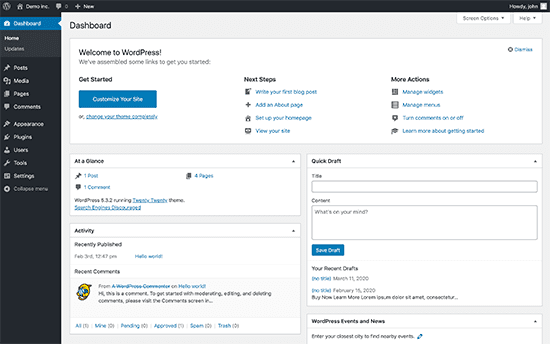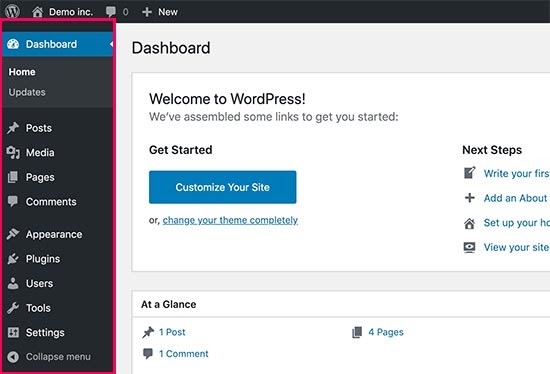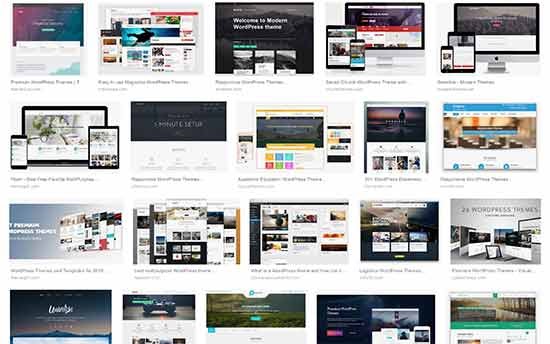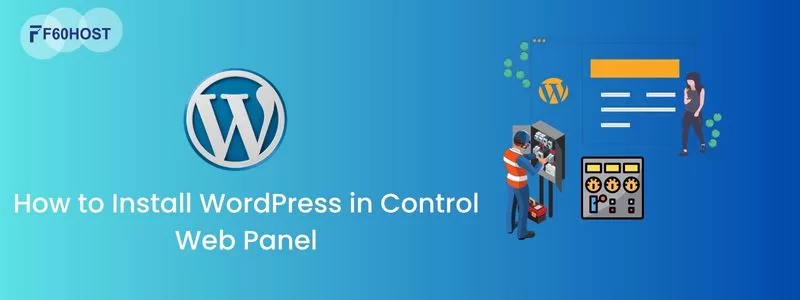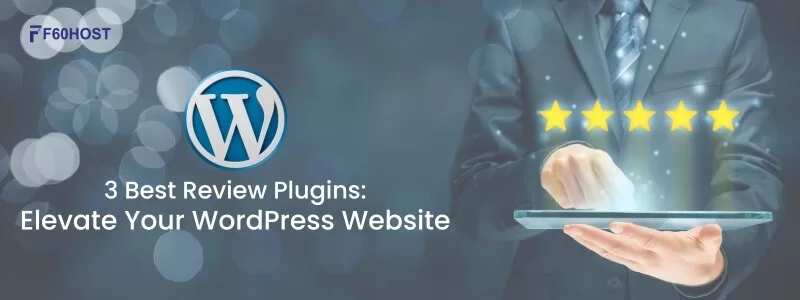WordPress Tutorials and How To Learn WordPress
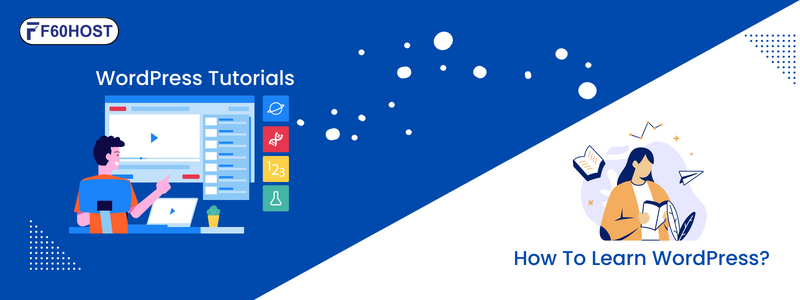
How to Learn WordPress for Free
After downloading the theme from the zip file, you may activate it using your admin. Open the Appearance menu’s Themes directory, find the theme, and click the Activate link.
What do I need to get started learning WordPress?
Learning WordPress is simple if you set aside a few hours each day for a week to devote to it.
You’ll need some basic search abilities (i.e., the ability to use search engines like Google) as well as the ability to follow directions.
To code a website, you don’t need to know HTML or any other programming languages. Learning them will be beneficial in the future, but you don’t need them to create a website using WordPress as a novice.
The majority of WordPress users don’t know how to code or program, and they’ve been using it for years.
Many successful WordPress developers began their careers in the same way you did, and now work full-time as web developers.
We’d like to welcome you to the wonderful WordPress and WPBeginner communities now that you’ve decided to learn WordPress.
WordPress: How to Get Started
WordPress websites can be divided into two categories. WordPress.org, generally known as self-hosted WordPress, comes first, followed by WordPress.com.
We recommend self-hosted WordPress.org because it comes with all of the WordPress features pre-installed. See our WordPress.com vs. WordPress.org comparison for more information.
After you’ve decided on a platform, the following step is to select a domain and web hosting provider.
Your domain is the address that users will type into their browser to visit your website (for example wpbeginner.com). We’ve put together a guide to assist you in choosing the right domain name for your website.
The next step is to select a web hosting provider. This is where all of your website’s files will be saved so that visitors may view it.
A domain normally costs $14.99 per year, with site hosting starting at $7.99 per month. If you’re just starting off, this is a significant sum of money.
Fortunately, Bluehost has agreed to provide WPBeginner users with a free domain name and a substantial hosting discount. Essentially, you can begin for $2.75 each month.
If you’re looking for a Bluehost alternative, try SiteGround or read our guide to finding the best WordPress hosting.
It’s time to install WordPress after you’ve purchased a domain name and a web hosting account.
WordPress is well-known for its ease of installation, and most hosting companies provide 1-click WordPress installers. If you need assistance, check out our step-by-step WordPress installation guide.
There’s also a step-by-step guide on:
- What is the best way to create a WordPress blog?
- What is the best way to make a website with WordPress?
- How to use WordPress to create an online store
- How to Create a WordPress Membership Site
- How to Launch a Podcast Using WordPress
See our guide to the many sorts of websites you may make with WordPress for more focused tutorials.
You can also install WordPress on your Mac or Windows computer if you only want to learn and create a test site. However, keep in mind that local websites are not visible to other internet users. You’ll need to move WordPress from your computer (local) to a live site to make it available to everyone.
After you’ve installed WordPress, you’ll be able to access the WordPress dashboard, also known as the admin area. It has a clean design with a toolbar at the top and a left-hand admin sidebar menu.
You’ve successfully created a WordPress website. Your website, on the other hand, is now empty, with a very basic design and no discernible functions.
You’ll familiarize yourself with WordPress features and learn how to set it up to work for you over the next three days.
Learning the Fundamentals of WordPress
It’s time to learn how to use WordPress now that you’ve installed it. You can do so by browsing the left-hand menu options.
However, you may require more instructions on how to use each of the things in the WordPress dashboard.
Our free WordPress video series for beginners is the ideal place to start. These 34 videos will walk you through the WordPress dashboard, including how to add photos, videos, and music, among other things.
As you work on your website, we recommend watching these videos. If you can’t watch them all at once, don’t worry. You can always go back and finish what you started.
You’ll come across phrases that you don’t understand as you work on your website. We’ve put together a helpful WordPress dictionary that includes a list of widely used WordPress terms as well as a full explanation of each term.
After that, you should learn how to use the WordPress block editor. When it comes to developing content for your website, this is where you’ll spend the most of your time.
While you’re at it, let’s go over some fundamental WordPress fundamentals.
- In WordPress, there is a distinction between posts and pages.
- What is the difference between Categories and Tags?
- What is the best way to add images to WordPress?
If you still have time today, check out our beginners guide section, which is packed with important information.
By this point, you should have a decent understanding of your WordPress admin area and be anxious to experiment with plugins.
Using Plugins in WordPress
The plugins are where WordPress’ true power lies.
Consider plugins to be the applications for your WordPress website. They enable you to add additional features to your website, such as contact forms and the creation of a store.
In the official WordPress plugin repository alone, there are over 58,000 free plugins. For newcomers, the sheer number of plugins available can be daunting.
That’s why you should check out our beginner’s guide to WordPress plugin selection.
You may now be asking which WordPress plugins you should install as a novice. For all types of websites, we’ve compiled a list of vital WordPress plugins.
Installing a WordPress backup plugin, a WordPress SEO plugin, and WPForms for your contact form is recommended for all users.
Also, take a look at our WordPress Plugins category, where you’ll find the greatest WordPress plugins for doing just about anything with your WordPress site.
Plugin exploration will keep you occupied for the majority of the day. Take your time to look into plugins that may be able to assist you in expanding your business.
The next topic we’ll discuss when you return is WordPress themes.
Using Themes in WordPress
The appearance of your website is controlled by WordPress themes. Themes are pre-made themes for your website that you may install and alter.
WordPress has thousands of free and premium themes to choose from. The WordPress Themes directory has a number of free themes to choose from.
Commercial theme shops such as StudioPress, Elegant Themes, Themify, and others sell premium themes.
An excellent theme should strike a balance between attractive design and robust functionality. A theme with too many features isn’t always a good theme. Take a look at our guide on picking the best WordPress theme for your site.
See our WordPress theme showcases if you want to look at specific WordPress themes:
The most popular and best WordPress themes (all-time)
- The best WordPress blog themes for free
- The best WordPress business themes for free
- The best magazine-style WordPress themes
- Photographer-friendly WordPress themes
Once you’ve discovered a theme you like, follow the steps in our guide on how to install a WordPress theme to set it up properly.
After that, review our WordPress videos from Tuesday to learn how to customize your WordPress theme’s background, add header pictures, add menus, and more.

